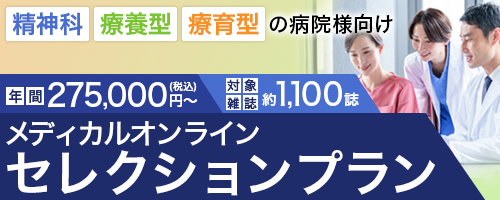アブストラクト
| Title | 脳卒中後の運動機能評価のための脳画像解析 |
|---|---|
| Subtitle | 放射線科医が知っておくべき脳血管障害診療 update |
| Authors | 玉利誠 |
| Authors (kana) | |
| Organization | 国際医療福祉大学大学院 医療福祉学研究科 保健医療学専攻 理学療法学分野 |
| Journal | 臨床画像 |
| Volume | 36 |
| Number | suppl-1 |
| Page | 129-140 |
| Year/Month | 2020 / 4 |
| Article | 報告 |
| Publisher | メジカルビュー社 |
| Abstract | 近年の脳画像解析技術の発展に伴い, 脳のネットワークに関する興味深い知見が数多く報告されており, 脳卒中患者が呈する現象の理解や予後予測などへの応用が期待される. 本稿ではMRIを用いた脳のネットワーク解析をテーマに, 構造的接続性, および機能的接続性と運動機能との関係について概説する. 「脳機能観とリハビリテーション」脳機能観には局在論・全体論・連合論があり, 脳の構造や機能に関する解析技術とともに脳機能観も変化してきた. 局在論は脳の特定領域ごとに機能局在を想定し, 脳損傷時には該当領域が受けもつ機能が低下すると考えるものである. また, 全体論は脳全体の等価なネットワークにより, すべての機能を受けもつことを想定し, 脳損傷時には脳全体が応分に機能低下すると考えるものである. |
| Practice | 臨床医学:一般 |
| Keywords |
- 全文ダウンロード: 従量制、基本料金制の方共に1,243円(税込) です。
参考文献
- 1) Catani M, et al : Beyond cortical localization in clinico-anatomical correlation. Cortex, 48 : 1232-1287, 2012.
- 2) Catani M, et al : The rises and falls of disconnection syndromes. Brain, 128 : 2224-2239, 2005.
- 3) Zhu LL, et al : Lesion load of the corticospinal tract predicts motor impairment in chronic stroke. Stroke, 41 : 910-915, 2010.
- 4) Kalinosky BT, et al : White matter structural connectivity is associated with sensorimotor function in stroke survivors. Neuroimage Clin, 2 : 767-781, 2013.
- 5) Lindenberg R, et al : Structural integrity of corticospinal motor fibers predicts motor impairment in chronic stroke. Neurology, 74 : 280-287, 2010.
残りの28件を表示する
- 6) Jang SH, et al : The relation between motor function of stroke patients and diffusion tensor imaging findings for the corticospinal tract. Neurosci Lett, 572 : 1-6, 2014.
- 7) Jayaram G, et al : Relationships between functional and structural corticospinal tract integrity and walking post stroke. Clin Neurophysiol, 123 : 2422-2428, 2012.
- 8) Madhavan S, et al : Corticospinal tract integrity correlates with knee extensor weakness in chronic stroke survivors. Clin Neurophysiol, 122 : 1588-1594, 2011.
- 9) Puig J, et al : Wallerian degeneration in the corticospinal tract evaluated by diffusion tensor imaging correlates with motor deficit 30 days after middle cerebral artery ischemic stroke. AJNR Am J Neuroradiol, 31 : 1324-1330, 2010.
- 10) Puig J, et al : Decreased corticospinal tract fractional anisotropy predicts long-term motor outcome after stroke. Stroke, 44 : 2016-2018, 2013.
- 11) Kwon YH, et al : Predictability of motor outcome according to the time of diffusion tensor imaging in patients with cerebral infarct. Neuroradiology, 54 : 691-697, 2012.
- 12) Bergmark A : Stability of the lumbar spine : a study in mechanical engineering. Acta Orthop Scand Suppl, 230 : 1-54, 1989.
- 13) Jijimol G, et al : Correlation of trunk impairment with balance in patients with chronic stroke. NeuroRehabilitation, 32 : 323-325, 2013.
- 14) Verheyden G, et al : Trunk performance after stroke and the relationship with balance, gait and functional ability. Clin Rehabil, 20 : 451-458, 2006.
- 15) Yeo SS, et al : Corticoreticular pathway in the human brain : diffusion tensor tractography study. Neurosci Lett, 508 : 9-12, 2012.
- 16) Jang SH, et al : Gait recovery by activation of the unaffected corticoreticulospinal tract in a stroke patient : A case report. Medicine(Baltimore), 96 : e9123, 2017.
- 17) Kubota K, et al : Relationship between trunk function and corticoreticular pathway in stroke hemiplegic patients : analysis using probabilistic tractography. Jpn J Comper Rehabili Sci, 10 : 96-102, 2019.
- 18) Biswal B, et al : Functional connectivity in the motor cortex of resting human brain using echo-planar MRI. Magn Reson Med, 34 : 537-541, 1995.
- 19) Beckmann CF, et al : Investigations into resting-state connectivity using independent component analysis. Philos Trans R Soc Lond B Biol Sci, 360 : 1001-1013, 2005.
- 20) Jung TD, et al : Combined information from resting-state functional connectivity and passive movements with functional magnetic resonance imaging differentiates fast late-onset motor recovery from progressive recovery in hemiplegic stroke patients : a pilot study. J Rehabil Med, 45 : 546-552, 2013.
- 21) Park CH, et al : Longitudinal changes of resting-state functional connectivity during motor recovery after stroke. Stroke, 42 : 1357-1362, 2011.
- 22) Tang C, et al : Decreased functional connectivity of homotopic brain regions in chronic stroke patients : A resting state fMRI study. PLoS One, 11 : e0152875, 2016.
- 23) Carter AR, et al : Resting interhemispheric functional magnetic resonance imaging connectivity predicts performance after stroke. Ann Neurol, 67 : 365-375, 2010.
- 24) Xu H, et al : Contribution of the resting-state functional connectivity of the contralesional primary sensorimotor cortex to motor recovery after subcortical stroke. PLoS One, 9 : e84729, 2014.
- 25) van Meer MP, et al : Recovery of sensorimotor function after experimental stroke correlates with restoration of resting-state interhemispheric functional connectivity. J Neurosci, 30 : 3964-3972, 2010.
- 26) Chen JL, et al : Resting state interhemispheric motor connectivity and white matter integrity correlate with motor impairment in chronic stroke. Front Neurol, 4 : 178, 2013.
- 27) Wang C, et al : Altered functional organization within and between resting-state networks in chronic subcortical infarction. J Cereb Blood Flow Metab, 34 : 597-605, 2014.
- 28) Carter AR, et al : Upstream dysfunction of somatomotor functional connectivity after corticospinal damage in stroke. Neurorehabil Neural Repair, 26 : 7-19, 2012.
- 29) Di Pino G, et al : Modulation of brain plasticity in stroke : a novel model for neurorehabilitation. Nat Rev Neurol, 10 : 597-608, 2014.
- 30) 日本脳卒中学会 脳卒中ガイドライン委員会 編 : 脳卒中治療ガイドライン2015. 協和企画, 東京, 2017, p275-295.
- 31) Volz LJ, et al : Shaping early reorganization of neural networks promotes motor function after stroke. Cereb Cortex, 26 : 2882-2894, 2016.
- 32) Lee J, et al : Modulating brain connectivity by simultaneous dual-mode stimulation over bilateral primary motor cortices in subacute stroke patients. Neural Plast, eCollection 2018.
- 33) Chen JL, et al : Increased resting state connectivity between ipsilesional motor cortex and contralesional premotor cortex after transcranial direct current stimulation with physical therapy. Sci Rep, 6 : 23271, 2016.



